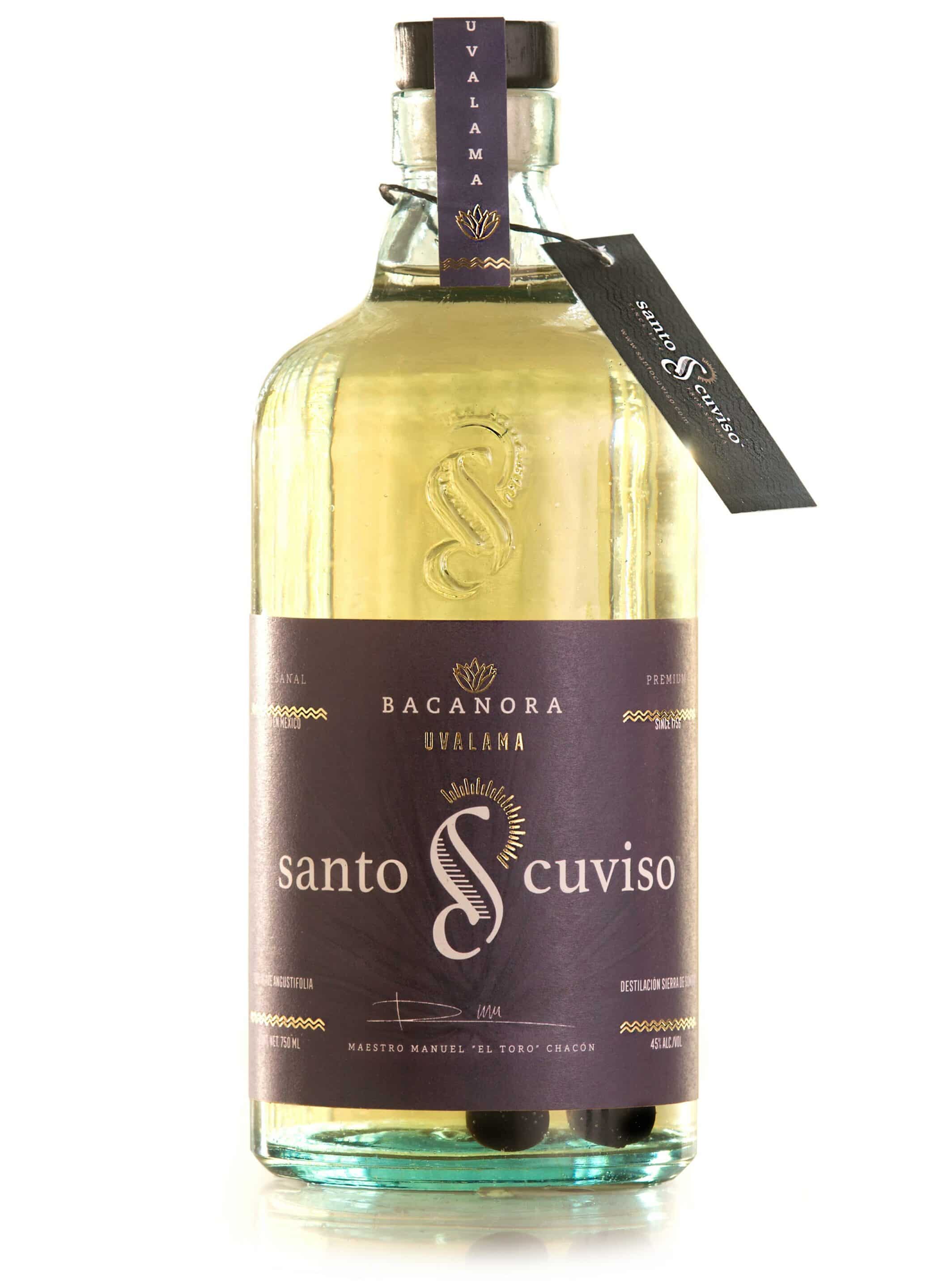Santo Cuviso Uvalama is the Blanco Bacanora that has been infused with Uvalama berries, a fruit tree endemic to the Bacanora area that produces small fruits the size of cherries that taste like plums. Each bottle comes with two uvalama fruits in it so you can see them, always a surprise, and taste them whenever the bottle runs out. The brand name of Santo Cuviso points directly at Bacanora’s history at the encounter between indigenous tribes and Spanish technology. The literal translation is Holy Mezcal or Holy Bacanora which is what the local Opata tribe called it when they presented it to a German Jesuit missionary passing through in 1756. The history of bacanora reaches further back than that, to at least 1646, if not further, proof that distilling either got up to speed quickly in Mexico or was already present in some fashion. That missionary, Ignaz Pfefferkorn was passing through Bacanora and fell ill with a digestive ailment. The Opata he was visiting gave him some mezcal as a cure and the next day he was fine. Whether a case of correlation or causation he was significantly impressed with it that he included the story in his account of the trip, Sonora: A Description of the Province. You can read it on Google Books or search for one of the original manuscripts which looks pretty stunning.

Brand | Santo Cuviso
Mezcalero | Manuel Chacón, Rumaldo Flores
Agave Species | Agave angustifolia haw
Agave Variety | Agave pacifica
Country | Mexico
State | Sonora
ABV | 45
Roast | Underground stone oven
Crush | Mechanical crusher
Fermentation | Wooden vat
Distillation | Copper pot still, double distilled
Tasting Notes | Click for Tasting Notes
Mezcalero | Manuel Chacón, Rumaldo Flores
Agave Species | Agave angustifolia haw
Agave Variety | Agave pacifica
Country | Mexico
State | Sonora
ABV | 45
Roast | Underground stone oven
Crush | Mechanical crusher
Fermentation | Wooden vat
Distillation | Copper pot still, double distilled
Tasting Notes | Click for Tasting Notes
